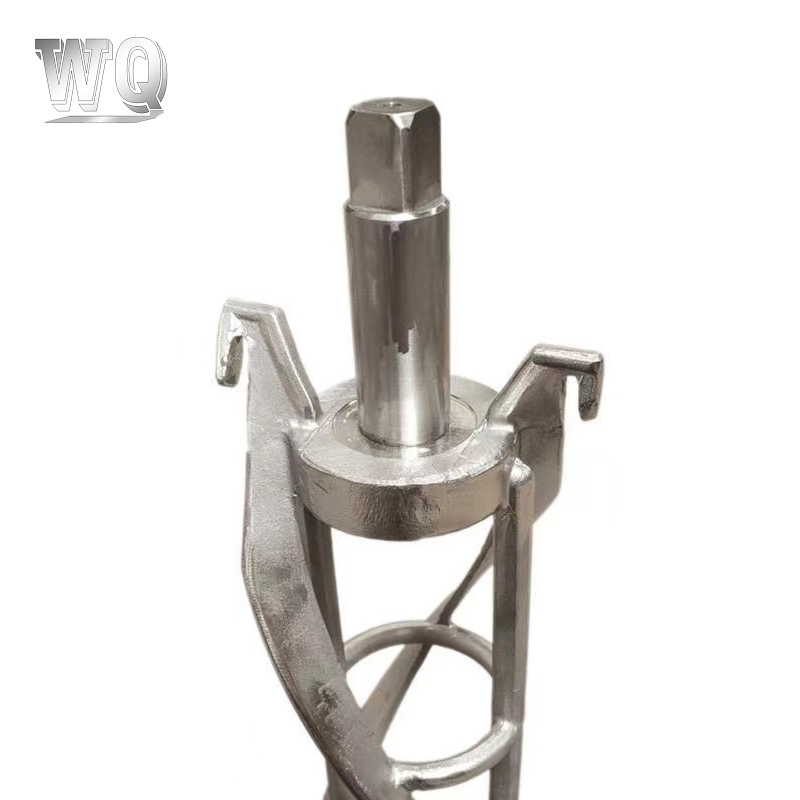Whether the Ice Cream Choke Flow Rod can meet the requirements of high production and high precision in industrial production lines depends on its design, material selection, manufacturing process and the degree of matching with the whole machine system. The following is a detailed analysis:
1. Challenges of high production requirements
(1) Flow stability
In high production scenarios, ice cream needs to be extruded at a constant speed and uniform texture. If the design or material of the flow control rod cannot ensure a stable flow, it may lead to inconsistent products.
The inner diameter, surface finish and friction coefficient of the flow control rod directly affect the flow resistance of the ice cream. For example:
A small inner diameter or a rough surface may cause insufficient flow or blockage.
A large inner diameter or an overly smooth surface may cause excessive flow or loss of control.
(2) Durability
High production means that the flow control rod needs to run continuously for a long time, which places extremely high demands on the wear resistance and fatigue resistance of the material.
If the material of the flow control rod is not strong enough, it may wear due to frequent friction, resulting in reduced accuracy or even equipment failure.
(3) Cleaning efficiency
High production is usually accompanied by frequent cleaning and maintenance. If the flow control rod is complex or difficult to disassemble, it will increase the difficulty of cleaning and affect production efficiency.
The use of detachable or modular design can significantly improve cleaning efficiency and reduce downtime.
2. Challenges of high precision requirements
(1) Flow control accuracy
High precision requires that the flow control rod can accurately adjust the amount of ice cream extruded to ensure that the weight and volume of each unit of product are consistent.
This requires the flow control rod to have the following characteristics:
Precision machining: The dimensional tolerance of the flow control rod must be extremely small to ensure the consistency of the flow rate.
Response speed: In the automation system, the flow control rod needs to respond quickly to the control signal to achieve dynamic adjustment.
(2) Material consistency
The uniformity and thermal stability of the material are crucial to high precision. For example:
Metal materials (such as stainless steel) are often used in high-precision applications due to their good mechanical properties and thermal stability.
Although plastic materials are less expensive, they may have thermal expansion or deformation problems, affecting accuracy.
(3) Anti-adhesion
The ice cream mixture contains sugar, milk fat and other ingredients, which are easy to adhere to the surface of the flow control rod, affecting the precise control of the flow rate.
By adopting anti-stick coatings (such as Teflon or food-grade silicone coatings), adhesion can be reduced, thereby improving accuracy.
3. Technical solutions
(1) Optimized design
Adjustable design: By designing an adjustable flow rate control rod (such as threaded adjustment or pneumatic adjustment), the flow rate can be flexibly adjusted according to different ice cream recipes.
Modular structure: The flow rate control rod is designed as a detachable module, which is easy to replace and maintain, while adapting to different production needs.
(2) Advanced materials
High-strength stainless steel: It has excellent wear resistance and corrosion resistance and is suitable for high-volume and high-precision applications.
Nano-coating materials: By coating the surface with a nano-scale hydrophobic or oleophobic layer, friction and adhesion can be significantly reduced, thereby improving flow control accuracy.
(3) Intelligent control
Sensor integration: Install a pressure sensor or flow sensor on the flow rate control rod to monitor the extrusion status of the ice cream in real time and adjust the flow rate through a feedback system.
Automation system: Combined with PLC (programmable logic controller) or industrial Internet of Things technology, the flow rate control rod can be automatically adjusted and remotely monitored.
4. Examples in practical applications
(1) Commercial ice cream machines
Commercial ice cream machines usually need to meet the needs of small and medium-sized catering stores, and their flow control rod design focuses on stability and easy maintenance. For example:
Food-grade stainless steel is used to ensure hygiene and durability.
A simple manual adjustment mechanism is designed to facilitate operators to quickly adjust the flow rate.
(2) Industrial production lines
In large-scale industrial production, the flow control rod needs to withstand higher pressures and more complex working conditions. For example:
The flow control rod is processed using high-precision CNC machine tools to ensure dimensional accuracy.
Integrate intelligent control systems to achieve automatic adjustment and data acquisition.
(3) High-end customized equipment
For special needs (such as low-sugar ice cream or plant-based ice cream), the flow control rod may require customized design. For example:
Add anti-stick coating to cope with high-viscosity mixtures.
Optimize the flow channel shape to adapt to the fluidity of a specific recipe.
The Ice Cream Choke Flow Rod can meet the requirements of high production and high precision by optimizing the design, using advanced materials and integrating intelligent technology. However, in actual applications, the overall performance of the equipment, user needs and cost factors need to be considered comprehensively. For industrial production lines, durability, precision and cleaning efficiency of flow rate control levers are key; while for commercial or home equipment, convenience and economy are more important.









